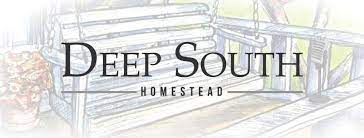Rare X crossing solar eclipse 4/8/24- same as pre-New Madrid earthquakes
-
Rare X crossing solar eclipse 4/8/24- same as pre-New Madrid earthquakes
Not predicting anything, just giving data.
Evidently three months prior to the New Madrid quakes in 1811-1812, a similar pattern of two intersecting solar eclipse’s paths occurred. The one in 2017 went from NW to SE with max viewing time over the New Madrid area. The 2024 one will move from SW to NE again w maximum view time over the New Madrid. Will an earthquake happen? Who knows, but the information is just a heads-up warning.
https://www.youtube.com/watch?v=C0kHvZuHnHU
There have been earthquake swarms recently on the New Madrid.
What did the originals look like? Two were over 8 on Richter scale and the main three occurred over three months with ongoing aftershocks.
“1811–12 New Madrid Earthquake Series
December 16, 1811, 0815 UTC (2:15 a.m.) (M ~7.5) epicenter in northeast Arkansas, probably on the Cottonwood Grove fault; it caused only slight damage to man-made structures, mainly because of the sparse population in the epicentral area. The future location of Memphis, Tennessee was shaken at Mercalli level nine intensity. A seismic seiche propagated upriver and Little Prairie was destroyed by liquefaction. Local uplifts of the ground and the sight of water waves moving upstream gave observers the impression that the Mississippi River was flowing backwards.
At New Madrid, trees were knocked down and riverbanks collapsed. This event shook windows and furniture in Washington, D.C., rang bells in Richmond, Virginia, sloshed well water and shook houses in Charleston, South Carolina, and knocked plaster off of houses in Columbia, South Carolina. In Jefferson, Indiana, furniture moved and in Lebanon, Ohio, residents fled their homes. Observers in Herculaneum, Missouri, called it “severe” and said it had a duration of 10–12 minutes.
Aftershocks were felt every 6-10 minutes, a total of 27, in New Madrid until what was called the Daylight Shock, which was of the same intensity as the first. Many of these were also felt throughout the eastern US, though with less intensity than the initial earthquake.
December 16, 1811, (M ~ 7) sometimes termed the “Dawn Shock” or “Daylight Shock”, 1315 UTC (7:15 am); epicenter in northeast Arkansas.
January 23, 1812, 1515 UTC (9:15 am) M ~7.3); epicenter around New Madrid, although this is disputed. This was probably the smallest of the three main shocks, but resulted in widespread ground deformation, landslides, fissuring, and stream bank caving in the meizoseismal area. Johnston and Schweig attributed this earthquake to a rupture on the New Madrid North Fault. A minority viewpoint holds that this earthquake’s epicenter was in southern Illinois. A 2011 expert panel urged further research to clarify this point, stating that the Illinois hypothesis would mean that an extended section of fault exists, perhaps still loaded and capable of hosting a great earthquake in the future.
February 7, 1812, 0945 UTC (3:45 am); (M ~7.5) epicenter near New Madrid, Missouri. This was the largest event in the series, and it destroyed the town of New Madrid. At St. Louis, Missouri, many houses were severely damaged, and their chimneys were toppled. It appears to have occurred on Reelfoot fault, a reverse fault segment that crosses under the Mississippi River just south of Kentucky Bend and continues to the east as the Lake County Uplift. In this event, uplift along the fault created temporary waterfalls on the Mississippi River, created a wave that propagated upstream, and caused the formation of Reelfoot Lake by damming streams.”
Log in to reply.

